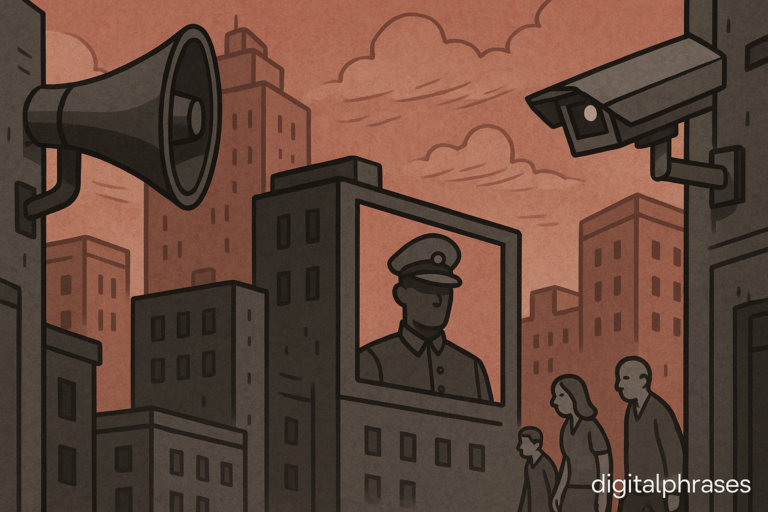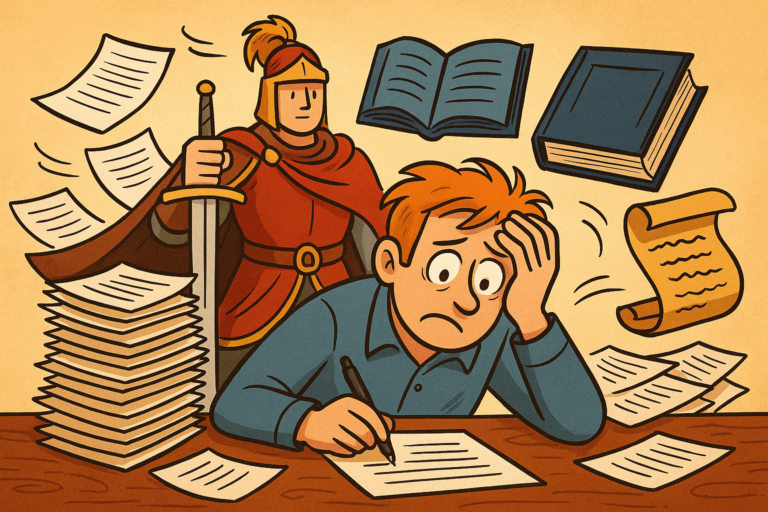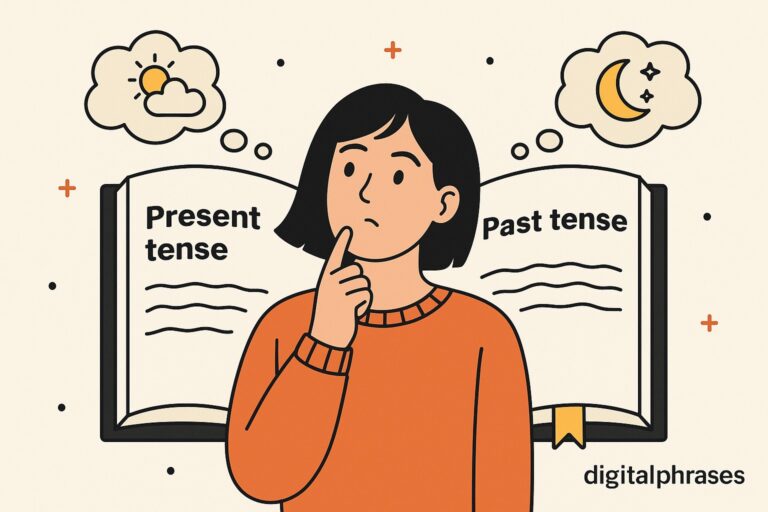What Kind of Villains Attract Readers the Most
You ever notice how, no matter how well we write our protagonists, the villain somehow keeps hijacking the spotlight?
It’s not just that they’re dangerous or dramatic—it’s that, when done right, they demand our attention. I’ve lost count of how many times I’ve read a novel or watched a series where the villain wasn’t just more interesting than the hero… they were the reason I stuck around.
And that’s not a knock on heroes. It’s just that villains are where the real narrative gravity lives. They’re the friction, the disruption, the uncomfortable question no one else wants to ask.
The best ones aren’t just obstacles—they’re thematic engines. They pressure-test the protagonist’s values, warp the world around them, and (if we’re doing our jobs right) make the reader feel something complex and maybe even a little conflicted.
Now, I know I’m preaching to the choir here. If you’ve been writing or studying story structure for any length of time, you already know that “make the villain interesting” is table stakes.
But here’s the thing: what makes a villain truly captivating isn’t always what we think it is. It’s not just about making them scary or giving them a tragic past or tossing them a cool monologue.
The villains that really hook readers—seasoned, literary readers—tend to share a few deeper traits. And those traits aren’t always intuitive.
Take Cormac McCarthy’s Judge Holden, for example.
You read Blood Meridian, and it’s clear the Judge isn’t just a man—he’s an idea. He’s terrifying because he’s philosophical. He speaks like he’s writing scripture, but he moves like a demon.
You can’t pin him down. That unknowability, that larger-than-life presence, is what makes him unforgettable.
And he’s not alone. You’ve got characters like Amy Dunne in Gone Girl—a villain who uses narrative itself as a weapon. Or Anton Chigurh from No Country for Old Men, who operates on a kind of moral logic that makes us feel insane for not agreeing with it.
That’s the kind of stuff I want to dig into here—not just what makes a villain “bad,” but what makes them magnetic.
What makes readers lean in, not pull away. Because when we, as writers, really understand that dynamic?
We don’t just make better villains—we make better stories.
Let’s get into it.
The Psychology of a Great Villain
Alright, so let’s talk psychology—because if we strip away the theatrics, this is where the real magic happens. The villains that stick with us aren’t the ones who just do bad things. They’re the ones who force us to wrestle with why they do it—and, maybe more uncomfortably, why part of us gets it.
I think we’ve all heard that line: “Every villain is the hero of their own story.” But let’s go one step deeper. The villains that attract readers aren’t just convincing themselves they’re right.
They often convince us too—at least for a second. And that second of internal conflict?
That’s gold.
Think about it: moral ambiguity is one of the most powerful psychological tools we’ve got as storytellers. When a villain makes sense—even when we hate that they make sense—it pulls readers out of the comfort zone. We’re not just watching conflict anymore; we’re experiencing it, mentally and emotionally. And that’s sticky storytelling.
Let me throw a few psychological frames at you here:
- Cognitive dissonance is a huge one. When a character like Walter White starts out with a “noble” cause—providing for his family—but descends into ego and control, readers don’t immediately turn on him. Why? Because their brains are trying to resolve the gap between who he was and who he’s becoming. That tension keeps people locked in.
- The Jungian shadow is another favorite. Villains often act out the suppressed, socially unacceptable sides of ourselves. Characters like Tyler Durden (Fight Club) don’t just reflect chaos—they tap into a deep, primal desire to burn it all down. Readers might never agree, but they feel the appeal, and that makes the villain incredibly compelling.
And let’s not forget the power of contradiction. One of the best ways to hook readers is to build villains who carry emotional complexity. Show me a war criminal who loves dogs, or a manipulator who’s terrified of dying alone, and suddenly I’m paying attention. It’s not about making them likable—it’s about making them human enough that we can’t look away.
Let’s take Iago from Othello—a classic, right?
He’s petty, vindictive, almost cartoonishly evil at times. But what’s brilliant is how personal it all feels. His motives aren’t about world domination or abstract ideals. They’re raw, emotional wounds: jealousy, betrayal, insecurity. You don’t sympathize with him, but you understand why he spirals—and that understanding is what makes him so dangerously real.
So, if we’re aiming to create villains that attract and trap the reader’s attention, this is the core:
Don’t just build a villain that the hero has to fight. Build one that the reader has to figure out—and maybe, just maybe, see themselves in a little more than they’d like.
Categories of Irresistible Villains
Alright, now that we’ve dug into the psychology, let’s zoom out and look at some of the types of villains that consistently hook readers—especially those who’ve read a thousand stories and are hard to impress. These aren’t just your typical “bad guys.” These are the archetypes that linger, long after the book is closed.
And quick note: most great villains blur the lines between these categories. But thinking in types can help us reverse-engineer what’s working under the hood.
1. The Ideologue
These villains don’t want chaos—they want order. Their own kind of order. And that’s what makes them dangerous: they believe they’re saving the world, even if it means burning it down first.
- Why it works: They force the reader to ask, Would I do the same in their position?
- Example: Ozymandias from Watchmen. He’s not greedy or cruel—he’s terrifying because he’s rational. He sacrifices millions for a “greater good,” and the worst part? The plan kinda works.
- Bonus example: Thanos (MCU version, not comics). The emotional resonance of his philosophy makes him disturbingly reasonable, even as he’s committing genocide.
2. The Mirror Villain
This one’s fun—and brutal. The mirror villain exists to reflect the protagonist’s inner flaws back at them. They’re the “what if” version of the hero. Same tools, same talent, but a different moral compass.
- Why it works: They clarify who the hero really is—and they usually get the best dialogue.
- Example: Moriarty to Sherlock Holmes. He’s not just a smart criminal—he’s Sherlock without the conscience.
- Another one: Erik Killmonger in Black Panther. He’s right about almost everything—except his solution is soaked in revenge.
3. The Charismatic Monster
This is your villain you hate to love. Charming, clever, cultured—and absolutely horrifying underneath it all. They’re seductive in a way that makes readers feel complicit.
- Why it works: They disarm us. We know they’re dangerous, but we want to hear what they’ll say next.
- Example: Hannibal Lecter. I mean, the man is a cannibal, and we still listen to him like he’s our therapist.
- Another good one: Tom Ripley (The Talented Mr. Ripley). He’s suave, adaptable, and absolutely chilling once the mask slips.
4. The Tragic Antagonist
These are the villains that make you ache. They didn’t start out bad—they were broken somewhere along the way. The tragedy isn’t just in what they do—it’s in what they could’ve been.
- Why it works: Readers don’t root for their downfall. They mourn it.
- Example: Gollum. He’s a warning and a victim all at once. His corruption feels inevitable and heartbreaking.
- Also: Magneto, especially in the comics and early X-Men films. His pain is political, historical, personal—and that makes his rage feel earned.
5. The Unknowable Evil
Let’s end with the heavy hitters—the ones who scare us not because of who they are, but because of what they represent. They’re mythic, cosmic, or existential. You can’t reason with them. You can’t even fully understand them.
- Why it works: Mystery breeds obsession. These villains haunt more than they harm.
- Example: The Judge from Blood Meridian. He’s not human—he’s a force of nature in a human body. Philosophical, poetic, and deeply unnerving.
- Or: Cthulhu and Lovecraftian monsters in general. Their horror comes from the sheer indifference to human life.
These categories aren’t a checklist, but they’re a great way to spark ideas or deepen characters that might feel one-dimensional. And when you start blending these types? That’s when things get really interesting. Imagine a charismatic monster who also happens to be a mirror of your protagonist. That’s how you create the kind of villain readers remember for years.
Techniques and Pitfalls For Crafting Magnetic Villains
So, we’ve talked about why villains matter and what kinds tend to draw readers in—but let’s talk about the how. The real meat of it. Because knowing you want a magnetic villain and actually building one are two very different things, especially when your audience is full of sharp, story-savvy readers who’ve seen all the tropes a dozen times over.
What I’ve learned—through writing, rewriting, reading obsessively, and swapping war stories with other writers—is that the villains who stick aren’t just evil. They’re not just “cool.” They’re carefully crafted to create emotional and thematic friction. They’re engines for tension. And the best ones? They make readers question themselves a little.
Let’s dig into some of the most effective techniques I’ve seen (and used) to bring villains to life, followed by the classic traps even veteran writers sometimes fall into.
Techniques for Building Truly Compelling Villains
These are craft strategies I keep coming back to, especially when I want a villain who doesn’t just scare readers—but sticks with them.
1. Weaponize Moral Ambiguity
If your villain is just “bad” while your hero is clearly “good,” you’re missing out on what makes readers feel conflicted—and that emotional confusion is story gold.
- Example: Erik Killmonger (Black Panther) is furious, violent, and absolutely willing to commit atrocities. But his anger makes sense. He’s reacting to real, historical injustices. A lot of people walked out of that movie thinking, “He wasn’t wrong… just broken.”
- Readers love that tension—when they want to disagree with a character, but something about them rings true. It makes the story feel morally alive instead of morally safe.
2. Tie the Villain Directly to the Theme
This is a subtle but powerful trick: whatever your story is about at its core, your villain should be the personification of the counter-argument.
- Example: In Les Misérables, if Jean Valjean is about grace and redemption, then Javert is the system of punishment and moral absolutism. He’s not evil—he’s principled. And it’s precisely that principled nature that makes him tragic.
When the villain and the theme are entangled, every scene with them becomes more than conflict—it becomes commentary.
3. Create Contrast Between Villain and Hero
This sounds simple, but contrast creates chemistry. And chemistry creates unforgettable dynamics. The more they differ—in values, methods, even speech—the more you can explore tension without needing constant action.
- Example: Sherlock Holmes and Moriarty. Both geniuses. Both master manipulators. But Sherlock uses his mind to solve puzzles and serve justice, while Moriarty uses his to create chaos. Their conversations feel electric because you’re watching two minds play chess with reality.
Contrast can be visual, verbal, emotional—it doesn’t matter how you deliver it. Just make sure they clash.
4. Let the Villain Be Unpredictable
Predictable villains are safe. Safe is boring. The more erratic or surprising your villain is—without being nonsensical—the more suspense you inject into the story.
- Example: Anton Chigurh from No Country for Old Men. That coin toss? Chilling. Why? Because you realize he’s letting chance decide someone’s life. That moment reframes him not just as a killer, but as something elemental—chaos disguised as calm.
When readers can’t predict what your villain will do next, every scene with them becomes a source of tension, even if they’re just talking.
5. Give the Villain Small Wins
Too many villains exist to get punched by the hero. A great villain, though, wins battles, even if they lose the war. Those wins make them feel credible, dangerous, and—crucially—respected by the reader.
- Example: Amy Dunne in Gone Girl. She doesn’t just manipulate people—she controls the narrative. She rewrites her marriage, stages her own kidnapping, frames someone for assault—and gets away with it.
Letting villains win occasionally isn’t about glorifying them. It’s about making the reader genuinely unsure of how the story’s going to turn out.
6. Reveal Layers Over Time
The best villains feel like puzzles. When you give away everything at once—motives, backstory, moral framework—you kill the intrigue. Instead, drop small revelations that reframe what the reader thinks they know.
- Example: Severus Snape. For most of the Harry Potter series, he’s positioned as cruel, suspicious, and borderline villainous. But over time, we learn about his history, his regrets, and his sacrifices—and everything changes. He’s not just a bitter teacher. He’s a tragic protector.
Readers love to re-evaluate characters. Give them that chance.
Common Pitfalls That Flatten Your Villains
Even seasoned writers can slip into these—so here’s a quick list of the classic missteps, along with why they don’t work and how to fix them.
1. Over-Explaining the Villain’s Trauma
Yes, backstory matters. But readers don’t want a villain whose motives feel like a therapy worksheet. If every evil act is justified by a tragic childhood, it starts to feel like emotional blackmail.
- Fix it: Implied pain is more powerful than explicit exposition. Let readers infer what hurt them. That makes the pain feel real instead of manufactured.
2. Going Full Mustache-Twirler
If your villain is evil just to be evil, readers—especially experienced ones—check out. The moment your villain starts monologuing about how much they love killing, unless you’re in satire territory, it’s over.
- Fix it: Even chaos needs logic. Give them an internal code, a worldview, a “why” that makes sense to them, even if it’s horrifying to us.
3. Making Them Invincible
A villain who always wins, always escapes, or never shows fear starts to feel fake. Invincibility robs them of tension.
- Fix it: Vulnerability doesn’t make a villain weak—it makes them human. Let them bleed. Let them doubt. That’s what makes them real.
4. Turning Redemption Into a Shortcut
Redemption arcs can be amazing—but when they happen too quickly, or come out of nowhere, readers feel manipulated.
- Fix it: Earn it. If your villain is going to turn, there needs to be resistance. There needs to be failure. Don’t make it easy. Make it cost them something.
5. Forgetting They’re Characters, Not Tools
Some villains exist purely to push the hero’s arc forward—and that’s a waste. If your villain disappears once the hero learns their “lesson,” you’ve written a plot device, not a person.
- Fix it: Ask yourself: what’s their story? What’s their arc? Give them an inner life, not just outer goals. You’ll feel the difference immediately.
Before You Leave
Here’s the wild thing about villains: no matter how many we’ve read, written, or dissected, the great ones still have the power to surprise us. They get under our skin not because they’re evil, but because they’re complicated. They ask questions our heroes don’t. They push boundaries, twist logic, blur lines—and force us to look in the dark corners of the story (and sometimes ourselves).
And as writers, that’s the invitation. To build antagonists who aren’t just in the way, but who feel inevitable. Magnetic. Alive.
So whether your villain is a poetic monster, a quiet ideologue, or a tragic mirror held up to your protagonist, don’t hold back. Let them be sharp. Let them be strange. Let them steal the scene once in a while—because when they do, the whole story gets better.
Let the reader wrestle with them.
And maybe lose.






